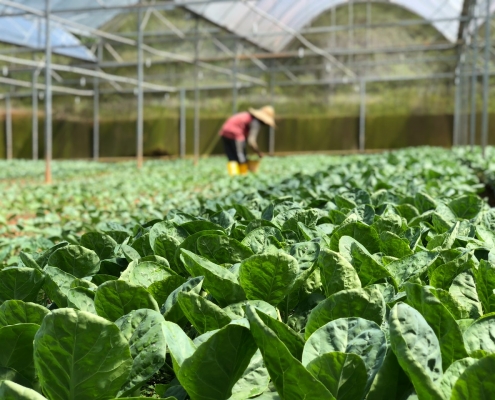The DNA of lettuces unraveled: 6000 years from weed to beloved vegetable
by Wageningen University
Iceberg lettuce, oakleaf lettuce, romaine, and all other lettuces that we eat nowadays, descend from wild plants that were modified 6000 years ago in the Caucasus so that plant oil could be harvested from the seeds. After the ancient Greek and Romans further bred the plants to use them as leafy vegetables, lettuce also ended up on our plates over time. The special history of lettuce has been described in detail thanks to the DNA analysis of 445 types of lettuce, conducted by Wageningen University & Research and the Chinese BGI. Their research will be published today in the authoritative periodical Nature Genetics and opens the door to faster and more effective breeding of more resilient food crops.
Try to imagine a collection of 2500 different types of lettuce: approximately 1500 varieties that were ever grown by farmers somewhere in the world and roughly 1000 populations of wild lettuce plants from roadsides and nature reserves. Then try to imagine the DNA being collected from all these types of lettuce and used to determine how the lettuce on our plate came to be. The first wild plants were modified for cultivation 6000 years ago in the Caucasus. These first lettuces were only suitable for harvesting seeds to extract oil, and the ancient Greek and Romans further bred these plants (at that time, they still had thorns on the leaves) to be used as leafy vegetables. And the story told by the DNA continues, up to the Americans that needed properties from wild varieties to change soft, smooth butter lettuce into hard, puckered iceberg lettuce. We’ve learned all that information from the DNA in these lettuce types!
Slow Migration Through Europe
The Center for Genetic Resources, the Netherlands (CGN), which is the Dutch gene bank and part of Wageningen University & Research (WUR), manages this collection of 2500 lettuce types. This is the largest, most complete, and best documented lettuce collection in the world.
In collaboration with the Chinese BGI, the DNA order is being determined for all 2500 types, including an analysis of genetic variants and the differences and similarities between these variants. The results from the first 445 types of lettuce have led to a publication in Nature Genetics about the origins and breeding history of the crop.
> Source: PHYS.ORG



 Credit: Unsplash/CC0 Public Domain
Credit: Unsplash/CC0 Public Domain Credit: Unsplash/CC0 Public Domain
Credit: Unsplash/CC0 Public Domain